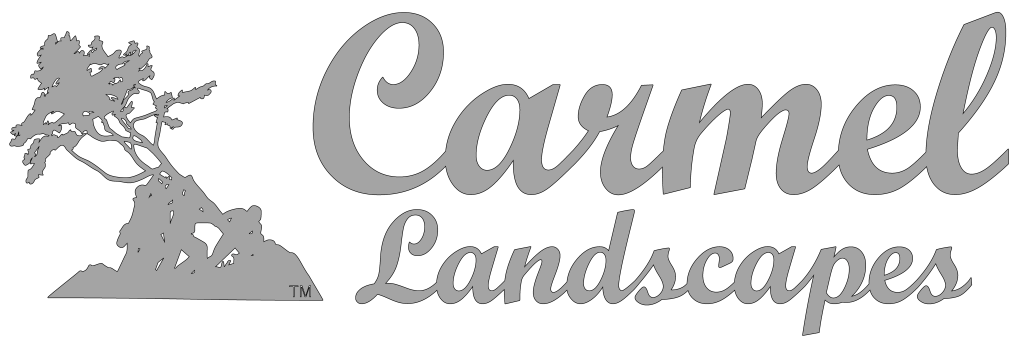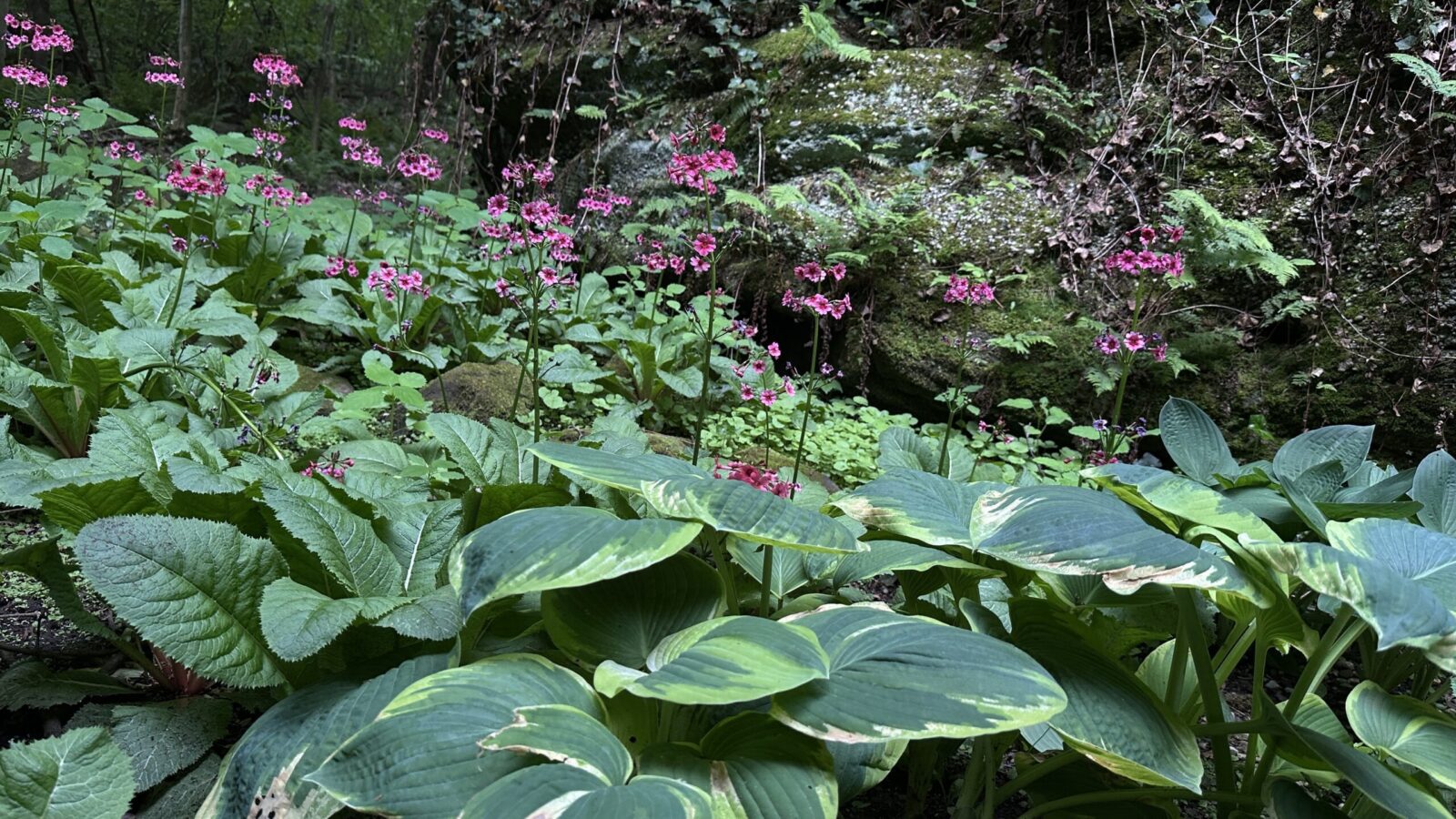The owner of Carmel Landscapes, a local Chagrin Valley landscaper, digs up the roots on summer landscaping services in Greater Cleveland.
Spring was great, right? Let’s be optimistic with this one. If we are going to live where our face hurts when we go outside, let’s take this opportunity to make positive impacts on the landscape around us. I don’t know how mother nature watches us push 6 inches of snow to sweating 6 inches of water overnight.
Those of us who can appreciate seasonal color, this is where the appreciation for the challenge to summer landscaping thrives. It’s 90 degrees out, we have no northern winds from Lake Erie to give us those weekly deluges. And all the spring flowers have done their thing.
In this guide, you'll find:
- Why your spring nursery purchases might be failing you in summer heat
- The truth about daily watering (and why you should probably stop)
- Which Northeast Ohio native plants actually thrive in summer heat
- How to diagnose overwatered vs. underwatered plants
- Safe planting techniques for summer (when absolutely necessary)
- Strategic pruning opportunities during summer months
- How Carmel Landscapes designs beautiful year-round gardens
The spring rush reality check
Marketing is such a strange phenomenon. We rush to the nurseries in May and buy every piece of color we can find. Why not? We just put up with 8 months of white. But now it is the hottest part of summer and what do we have? Hydrangeas? Maybe some roses here and there? Nothing against hydrangeas, but a lot of them are sterile and don’t provide much for the local ecosystem other than food for the deer prancing around Gates Mills and a decent show if they are in a protected space.
The real success of summer landscaping is planned in the spring and the previous fall. Did you buy all the plants that were blooming at the nursery during the spring rush, or did you consider what is to come? I see many landscapes out there that have no summer blooming perennials. Again, maybe the overplanted hydrangea, however for Northeast Ohio that is kind of a shame.
Stop watering every day (seriously)
How about that lawn? If you’re still cutting at spring height, there probably is not much to cut… If you haven’t given up on the season, raise your height and cut less frequently. Give yourself a break from the lawn, it will thank you.
What about those that have irrigation? Sure, go ahead and turn on the irrigation… every day, soak that lawn. That’s what the golf courses do so it makes sense, right?
If you haven’t turned on your irrigation, that may be something you want to focus on. I myself however am not the biggest fan of irrigation, as I like to design things that strive in the natural environment around them. I think irrigation in most cases creates more problems than they help.
Heat is a fuel for bacteria and fungus. The good and the bad. High summer is where the bad stuff can really explode if you’re one of those irrigation connoisseurs that waters your plants all day.
We like watering deep but infrequently. It reduces the potential for root rot, bad bacteria growth, and encourages roots to chase water. Too many times have I seen brown patchy lawns and leaves in July that have root balls soaked to the core.
If you have been watering your plants every day, good news: you’re about to save a lot on your water bill, because I’m going to politely ask you to stop. If you are an irrigation connoisseur and have many potted plants and annuals, then you have my permission to water those daily. This blog will focus on your permanently located, native plants.
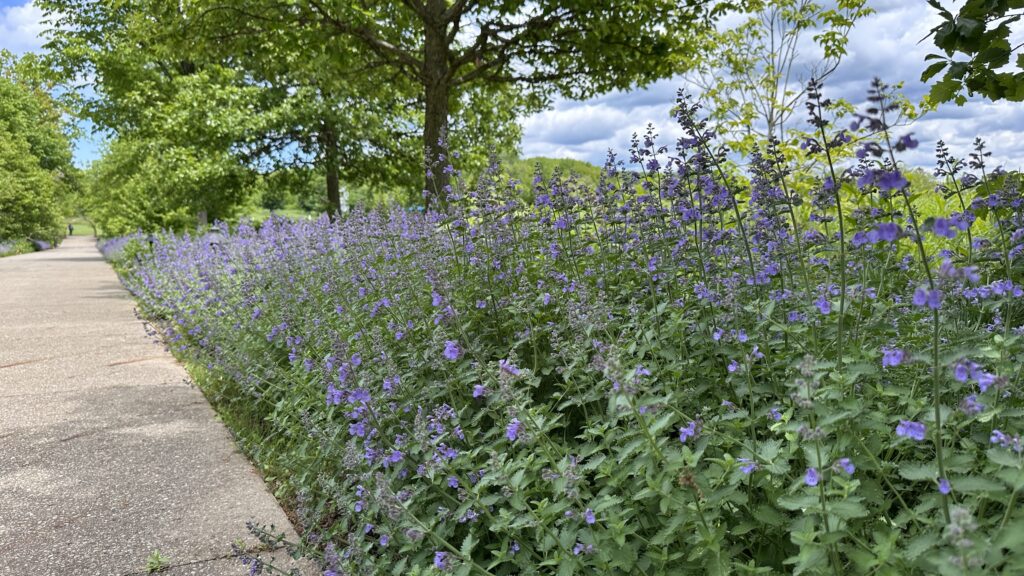
Diagnosing plant problems in the heat
Symptoms for an underwatered or overwatered plant are almost exactly the same, and since the event creates an unhealthy plant it creates other symptoms that are related to the original cause. Using a commonsense approach we can do some investigating.
Have you or have you not watered? Did you recently plant it? Those 2 questions will eliminate a lot of ambiguity before proceeding. If your leaves are to the point where they are yellow, find out if they are crunchy or slimy. I’m sure you can figure out what crunchy means.
If you have other symptoms like leaf drop or leaves that look eaten, curling, and or black discoloration, this may suggest a fungus or bug, but only exacerbated because it’s an unhealthy plant to begin with. Dig up the soil around the root ball to find out if the soil is soaked or dry to decide what step to navigate next, before aimlessly spraying pesticides.
It’s a lot to investigate to some, but it’s what our technicians do best. We use cognitive problem-solving skills that pinpoint origins to formulate solutions, but we will always preach prevention and keeping it native to avoid expensive plant replacement costs.
Summer stars: Plants that actually thrive in summer heat
We have so many native flowers that show their strengths in the heat of summer, providing food for our local critters. I personally think this is sometimes the case because a lot of these plants might be mistaken for weeds in the spring and pulled, or worse sprayed with Roundup! So many times, we pass building after building of globe or box shaped shrubbery and cherry trees that provide no pollination to the local ecosystem in the summer season.
There are 365 days in a year, and a well-curated lineup of native plants keeps the show running daily, each species taking its turn, so something is always in bloom or providing for the ecosystem. Thankfully, due to our commitment to professional development our teams are well educated and equipped with the right tools to identify even young ornamental plants.
Northeast Ohio summer showstoppers:
Joe Pye Weed is in my top 10 summer plants in Greater Cleveland, so don’t let the word weed throw you off. This plant will bloom from July till frost, and for a plant that’s a long time! Most spring plants only put on a show for 7 or so days. These take to wet sites well and are very tall when in bloom so some space accommodation should be considered.
Delphinium (tall larkspur) – If you really want color and have the room, plant some delphinium. This is generally not sold at nurseries, but cultivars are widely available.
Monarda is another great option that will take you to fall, and there are so many varieties you can really showcase a kaleidoscope of color all summer long.
Hibiscus is my all-time favorite July bloomer. It’s native and has enormous blooms. It’s a herbaceous plant that explodes in size in June in preparation for its color show. There are so many varieties that one can easily create a diverse show of both foliage and flower color.
This is just to name a few. There is such a variety to choose from when the Chagrin Valley plans on bringing the heat.
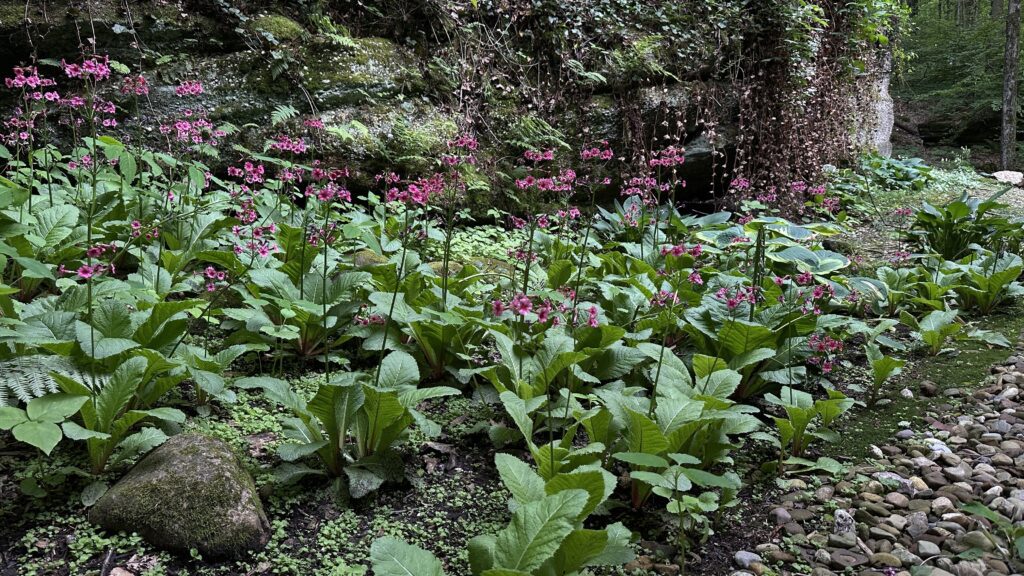
Pruning opportunities
Summer is a beautiful opportunity to prune some of your shrubs. Remember those hydrangeas I keep bringing up? Specifically, the macrophylla type during blooming is the time to mitigate their size, others you should wait till fall. Viburnum, roses, willows, weigela, and ninebark to name a few are also great choices to prune.
For time’s sake there are many more, but these are some of the most common shrubs we run into that we can prune in Northeast Ohio’s sweltering heat. There are however many shrubs I would absolutely stay away from in the heat of summer, like lilacs and rhododendrons.
If you’re not comfortable figuring out what to prune, it’s still a good time to remove crossed branches, dead branches, and low hanging branches from any plant.
When you absolutely must plant in July
July is a testament to those landscape companies that truly know what it means to create sustainable landscapes and strive for more than the spring rush. Planting in July is generally discouraged because of the heat and lack of rain. There are seasonal abnormalities and microclimates that we can sometimes take advantage of in the Chagrin Valley but generally we are not packing our schedule full of planting jobs.
Planting is kind of like giving birth. Well, it’s exactly like raising a child without the weight gain, the epidural, the hand-me-downs, and the family support. It’s just you and your baby plant, and it’s going to cry… a lot. Sometimes water isn’t enough in the type of heat that cooks an egg on the hood of your car. You should really consult an expert in this type of heat. It’s generally not a yes or no answer.
If you're determined to plant in summer heat:
Things exist because of the environment around them, and those that must acclimate generally succumb to that environment before they acclimate to the environment. So let’s give your child the best platform in the worst environment.
You have your plant and there’s no talking you out of it. Even so, if it’s a severe drought or extreme heat condition don’t do it. Using a container-based plant from the nursery is going to have the best success rate. Even so container plants dry out fast, so keep it wet, and store it in a cool shaded environment until it’s ready to be dropped in the hole.
Wait for a cool or overcast day and presoak the hole with plenty of water. We like to add Penn mulch to our holes when planting to retain even more water. Once your plant is properly placed, soak it again. Run water slowly around the collar of the plant for a long period of time instead of running a lot of water for a short period of time. This will ensure water does not wash away from the root area.
Mulch heavily, 3 or so inches, but don’t let the mulch touch the flare and collars of the plant. If you have access to gator bags or watering doughnuts, use them, and keep them full. If not this is one of those times I’m going to allow watering everyday to keep the root ball moist… not continuously soaked.
This won’t be a couple day process. I’m thinking over the period of a month before you can’t claim your plant as a dependent anymore. This is a game of patience. It is difficult to overwater a plant in the Northeast Ohio heat, but it can be done, and it’s easier for a plant to come back from an under watering than an over watering. So diligence is key here. Let’s just prevent either from happening.
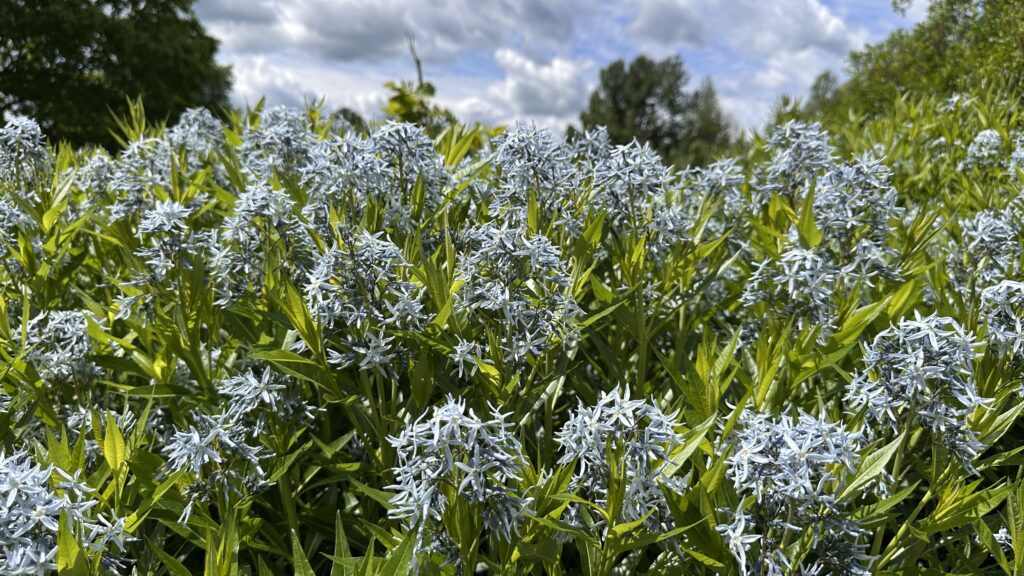
Professional care during extreme heat
For those of us that are not struggling with drought stricken unhealthy plants, summer is a wonderful time to keep them healthy. I know the old saying “if it ain’t broke don’t fix it”, works well in most cases, but we are talking about nurturing your plant child to resilience.
You may want to avoid fertilizers in high heat situations, especially those that are high in phosphates and nitrogen, also synthetic in structure. If you must use some kind of fertilizer, keep it organic and slow release. We are big fans of poultry manure-based fertilizers, humic and fulvic acids, and of course using them sparingly in the heat of summer.
As a preventative to heat stress and drought type conditions, we do sometimes delegate Wilt Stop sprays, but will always recommend infrequent early morning deep waterings.
And don’t neglect the high heat yourself, either!
In July one of our priorities is considering the health of our technicians in the field and encouraging them to stay hydrated by providing additional electrolytes and fruits on those super-hot days. We schedule jobs that provide shade in the heat and encourage our crews to consider the movement of the sun when working along structures to stay in the shade. We start earlier and encourage more hydration breaks. You should do the same.
Planning ahead for next summer
Didn’t get an opportunity to plan for any summer color? Don’t sweat it. As the famous Cleveland saying goes… there is always next year. But you’re still reading because you’re intrigued by our ability to foster year round outdoor spaces that create a biodiverse environment for the local population.
Planning for a summer landscape is essential to its success; we must not get overly excited about spring and spoil summer’s potential. So what now? How can you prepare for summer if it’s already here and you don’t have anything to show for it?
Don’t sweat it…yeah, I know, bad joke. As the famous Cleveland saying goes… there is always next year… yes, an even worse joke. But you’re still reading because you’re intrigued by our ability to foster year round Outdoor spaces that create a biodiverse environment for the local population, and no I’m not talking about the Browns fans.
If there is a shrub or plant that you love, and it looks like it’s having a hard time, don’t just jump to the conclusion that it needs water. Remember earlier when I said heat and moisture are fungus’s best friend? Let’s partner up and diagnose it together.
And if you are a diehard Browns fan, that may rub off on your (green) thumb and maybe just consider leaving the plant stuff to the experts. You go figure out where you’re going to watch the next game and we will babysit your garden.
Carmel Landscapes specializes in creating sustainable landscapes that thrive in Northeast Ohio’s challenging climate conditions. Our teams understand the unique requirements of Greater Cleveland area gardens and can help you develop a landscape strategy that provides year-round interest while supporting local ecosystems. Contact us to discuss how we can help you create a landscape that works with nature, not against it.
We're hiring!
Carmel Landscapes is seeking motivated, skilled workers to join our team. Skilled laborers are needed for our high-end hardscape projects. Horticulture and landscape technicians are needed to help design, plant and maintain our sustainable, eco-friendly projects.
We value hard work, craftsmanship and an eye for detail, offering competitive pay and full-time employees enjoy benefits and PTO.
